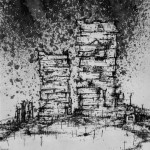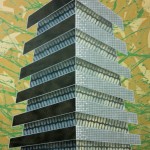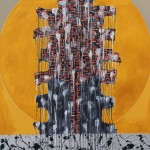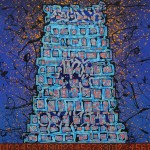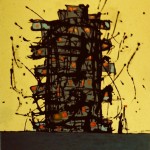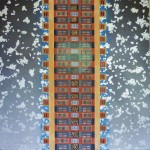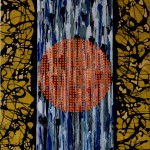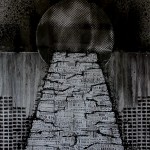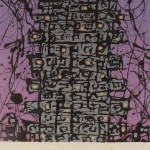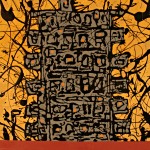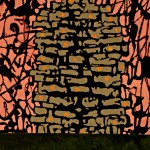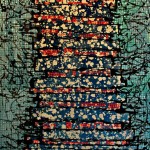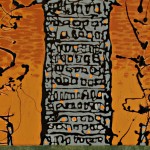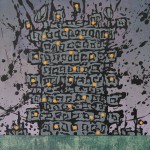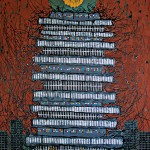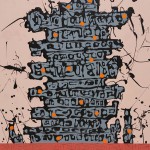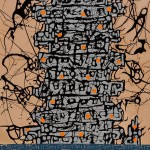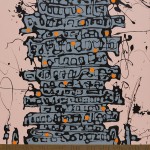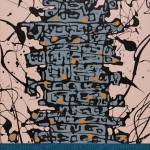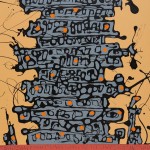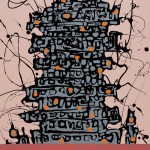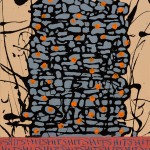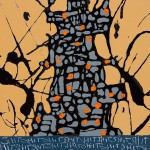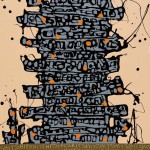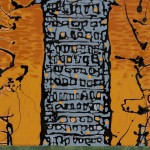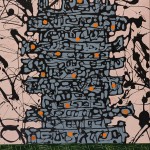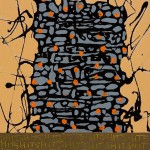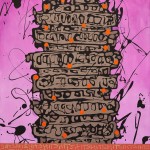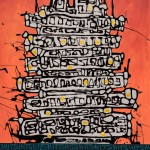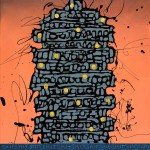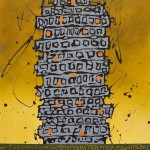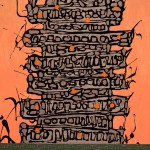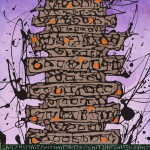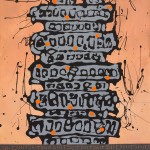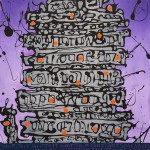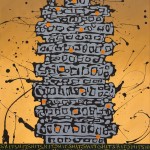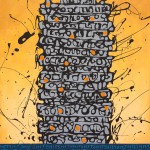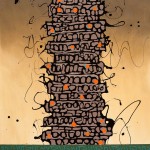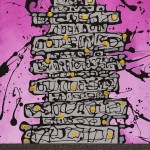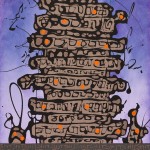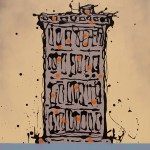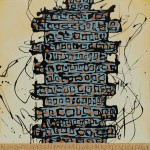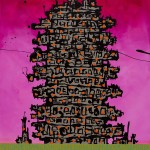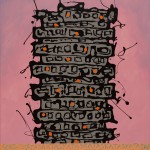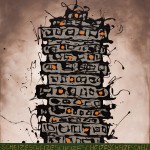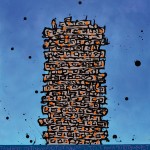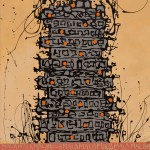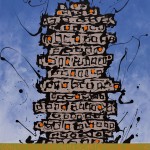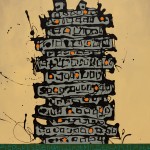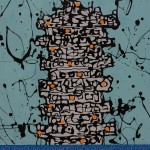Histoire de la merde
“This little pile of shit, heaped here before my door, is mine, and I challenge any to malign its form. This little heap is my thing, my badge, a tangible sign of that which distinguishes me from, or likens me to, my neighbor. It is also what distinguishes him from me. His heap will never be mine. Whether he be friend or foe, this alone will allow me to recognize if we are alike: neat, clean, negligent, disgusting, or obviously rotten.”
Dominique Laporte 1978
“Tower Paintings” by Mark Lloyd from his series “History of Shit”. These paintings take as their central image the Tower of Babel, the archetypal image of chaos and confusion that has fascinated artists from Hieronymus Bosch through to Anselm Kiefer. Lloyd has brought this image up to date by adding references to the digital age and the suggestion of the recent economic and urban meltdown. This darkly dystopian view is vivid in images such as “Simulation during the Neo-Fracturation of Language” where a tower block is populated with digital figures, the sky explodes with colour and violence and computerized tendrils spread into the earth. Trained as a fine artist, Lloyd’s “Tower Paintings” draw on the history of modernism as well as the artist’s background as a graffiti artist. His work has developed through various styles while always fusing his love of the direct language of street art and his awareness of twentieth century masters such as Jackson Pollock and Jasper Johns, both artists who worked in bold, challenging and influential styles. However, the tower is also the great symbol of architectural modernism and Lloyd seeks to undermine this symbol. His awareness of the reality of life inside such towers suggests not utopia but urban alienation and disillusion. It also evokes the DIY culture that informed hip-hop and the birth of graffiti. The tower here is a symbol of both destruction and creative rebirth. As well as depicting urban decay, many of these paintings were made from materials found in the streets of the inner cities, sourcing canvas, wood and stencils from the rubbish. As well as drawing visual inspiration from urban environments the work is in a very real way made from the street. The paintings teem with life, the clashing of styles and the sense that something is brooding on the horizon.
Beverly Luckings 2014



